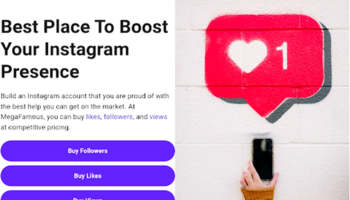In modern web design, minimalism is a popular approach. There are countless ways to implement minimalism, whether it be using colors, transitions, navigation, or removing all elements altogether.
The philosophy of using only elements needed to complete the design is achieved through the use of less is more for Web design. The goal is to achieve more with less design by using less to achieve more than its parts. Minimalism in web design follows these principles:
- Interface that is easy to use;
- Navigation hidden;
- A maximum of three colors at once;
- Space is plentiful;
- Font experiments;
- A color transition, a shadow, or a texture should not be excessive.
A minimalist web design simplifies the interface by removing unnecessary elements. In other words, do as much as you can with as little as possible.
Despite the ease of creating and maintaining minimalist websites, even experienced designers can commit the following mistakes:
- Creating unfinished products as a result of a lack of thought.
- Adding minimal navigation buttons at the expense of important navigation, resulting in an uncomfortable user experience.
Achieving minimalism
There are a few key practices that can help you create stunning minimalist websites, applications, and other digital products.
Whitespace is important
Negative space is the space between elements (which is a more appropriate design term). Whitespace provides many benefits, most importantly, that it improves the user experience and draws attention to your website content and product. A design with whitespace is more balanced. Your website can be made more enticing by considering what occupies the space between your main content blocks. It will encourage readers to stay longer and scroll further.
The main trick to maintaining a minimalist style is to leave a lot of white space.
Thomas Slack, a fashion and portrait photographer in Los Angeles, uses whitespace beautifully on his website. He doesn’t distract the viewer from looking at the beautiful work he produces.
Brighten up your design
The use of vibrant colors can be tricky with minimalism, despite how fun they are. The use of vibrant colors catches the eye and brings attention. A background that’s too colored isn’t as captivating – it’s now irritating.
Designing minimalistic products is challenging because designers have no place to hide. There is no space for compromise. For the design to be successful, every element has to be carefully selected and implemented.
Minimalist designers often underestimate how much time, effort, and skill it takes to produce a product that meets aims in terms of user behavior and experience while maintaining a truly minimalist aesthetic.





